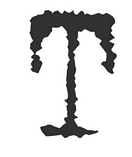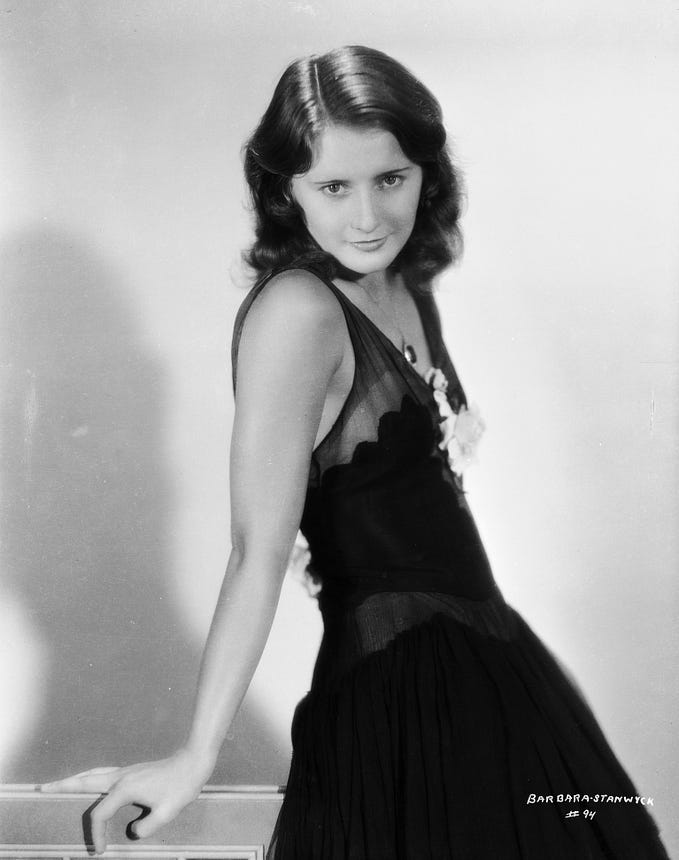


Thursday, June 2, 1927: New York City
Hooded Baseball

 The train ride from Philadelphia to New York takes just under two hours. It’s just long enough to have a leisurely dinner, and a couple of hands of gin as we wait for the special to pull into New York’s Pennsylvania station.
The train ride from Philadelphia to New York takes just under two hours. It’s just long enough to have a leisurely dinner, and a couple of hands of gin as we wait for the special to pull into New York’s Pennsylvania station.
Tonight everyone is in swell spirits, as we just kicked the teeth out of the Athletics, winning the last four games of our five game series 6–5, 10–3, 18–5 and 2–1. Monday’s Memorial Day doubleheader drew a two-game total of over 80,000 in Shibe Park, which we’ve been told is the largest ever in Philly. The atmosphere at the ballpark was a circus. Fans were sitting on the walls, hanging from trees, watching from the rooftops across the street, overflowing the stands and lining parts of the field.

Ruth and Gehrig were particularly destructive this trip. The Babe had three homers, two doubles and a slew of singles. During batting practice before the second game on Thursday, he hit the ball so hard that he ripped the horsehide off of it — honest, the outside of the ball was torn almost halfway around. The fans reacted to the Babe’s batting like they were watching a series of Dempsey knockouts, cheering wildly for him.
“Looks like the Philly fans have discovered another way to boo their home team,” observed Schoolboy.
In Ruth’s last at-bat in Tuesday’s doubleheader — during which we scored 28 runs — Jidge batted right-handed for the first time ever in a game, just to stick it to Cobb and company. He grounded out, but was laughing all the way down the first base line.
Gehrig also tortured the A’s, hitting a home run, a triple and four doubles. Lou’s now batting .418 with twelve home runs (four behind Ruth) and 55 RBIs, in only 44 games. If I were pitching against the Yankees, I’d be more scared of Lou than the Babe. When Ruth hits the ball, by the time it’s passing the mound the ball is already a hundred feet in the air, but Gehrig’s low line drives could easily kill a pitcher — they bang off outfield walls with a thud that makes everyone in our dugout laugh, and everyone in the other team’s dugout shake their head in disbelief.



In the dining car on the ride home, Sailor Bob, Benny and I are having dinner with Herb Pennock and Judd, a close friend of Pennock’s from Philly, when Schoolboy Hoyt joins us with a thump! — tossing a pile of New York newspapers onto our table.
“Helluva Memorial Day parade we missed in New York on Monday,” says Schoolboy.
All of the papers — the Herald, the Sun, the World, the Telegram, the Times, and Hoyt’s hometown Brooklyn Eagle — are open to articles about a riot that broke out Monday between the Ku Klux Klan and the New York City cops who were on parade patrol in Queens.
Scanning the Telegram’s story, Benny tells us, “The police first asked the Klan not to march in the Memorial Day parade, then the hoods were told by the cops not to march in uniform, but the Klan showed up in full regalia anyway.” He reads a little bit more to himself, and then reports, “Wow! They say there were over a thousand Klansmen brawling with about two hundred cops.”

All two hundred cops were probably Catholic (there might be two cops in all of New York who aren’t), and no doubt all of “New York’s Finest” took great pleasure introducing the white-hooded heads of the Klansmen to their black billy clubs. The Klan regularly proclaims the Irish should never have been allowed to set foot on America’s shores in the first place, and that they should all either be sent back on the next boat to Ireland or just pushed back into the ocean.

Benny, who was studying to become a priest before he became a ballplayer, pops his head back up from behind his newspaper. “Get this — it says the Klan is now threatening to sue the city for not protecting them.”
Herb Pennock isn’t saying a word. The man the press calls “The Squire of Kennett Square,” because of his family fortune and the exclusive town outside of Philadelphia where he was born and lives, can be very reserved.
“Schoolboy, have you ever seen a Klansman?” asks Benny.
“I’m sure I have,” Hoyt says. “They’re all over. I guarantee you they’re on this train. But I’ve never seen one walking around in a bedsheet.”
“Jesus,” says Benny, “Those outfits give me nightmares. I really can’t stand these guys.”
Pennock and his friend excuse themselves and then walk down to the other end of the car and sit with Dutch Ruether and Silent Bob Meusel.
“I think you may have hurt Herb’s friend’s feelings,” says Sailor Bob.
“What are you talking about?” I ask.

“Last August,” says Schoolboy, “about a month before the Klan’s big Washington parade, we’re in D.C. to play the Senators. Before one of our games, after we finish our running, Pennock and I are in the visitor’s bullpen at Griffith Stadium when I see the letters ‘KKK’ carved into the side of the wall. So, Pennock and I start talking about the Klan rally that’s about to happen, and the Squire says, ‘Some of what they say makes sense to me. There are too many people coming into this country that aren’t American. Doesn’t that worry you?’”
I know Pennock has an “I got here first” view of America and is aristocratically proud that his forefathers hitched an early ride over with a fellow Quaker, William Penn, but I underestimated just how far it goes.
“So, what did you say?” asks Benny.
“Well, you know, the Squire’s snobby proud that his family goes far back, but I’m a Son of the American Revolution — my family’s been here since the 1600s — so, first I remind Pennock of my bona fides. Then I ask him, ‘So, Herb, when you look around our clubhouse, just who do you want to ship back? Lazzeri?’
“He said Lazzeri?” Benny asks, getting agitated.
“No. I said Lazzeri.”
“And he said?”
“He says, ‘Shit, no. Not Lazzeri. It’s September and the W*p’s second only to Ruth in home runs and RBIs. Besides, he’s just a rookie!’”
Everybody laughs.
“You see, Benny, our Mr. Pennock may be an ‘America First’ guy, but he’s also a ‘Let’s win the American League, first’ guy.”
“Insane,” I say.
“Oh, no,” says Sailor Bob. “We haven’t come close to the insane part, yet.” He sweeps his hand over the table and cedes the storytelling back to Schoolboy, “Here it comes now.”

“The Squire tells me he has a pal who sends the Klan money to support their baseball teams.’”
“Their what?” asks Benny.
“That’s exactly what I say to him,” says Hoyt. “‘Their what?’ Then Pennock tells me, ‘The Klan has baseball teams all around the country, and my pal Judd sends them money to outfit them.’”
“Holy Jesus, that guy Herb’s with tonight,” says Benny.
“I say to him, ‘Shit, Herb. It must be terribly difficult to run the bases in those robes. Not to mention how hard it must be to hit a fastball while peering through the peepholes in those hoods — that’s gotta be extremely difficult for your boys.’
“And the Squire says to me — very seriously — ‘No one’s wearing robes or hoods, Schoolboy. They just wear regular uniforms and red caps.’
“So, then I ask him, ‘Do the caps actually say, “The Klan” on them?’”
“Do they?” asks Benny.
“No, Benny, they do not. He says the caps say ‘KKK’ — and then Herb says, ‘You know, like on a scorecard after you strike out the side: K-K-K.’ And he’s really proud he thought of that.”
Everyone laughs again at the absurdity of it all.
“I tell him, ‘That’s really clever, Herb. I’m sure the first thing most Americans think of when they see “KKK” on one of the Klan’s team’s caps is how much it reminds them of three batters striking out in a row.’”
Sailor Bob jumps back in. “What’s really crazy is who the Klan teams play ball against.”
“Other Klan teams?” asks Benny.
“Yes,” says Sailor Bob. “But also Jews and coloreds.”
“Of course,” says Schoolboy, “they refer to them as n*gg*rs and k*kes.”
“Come on, that’s unbelievable” I say.
“No, it’s true,” says Sailor Bob. “They call them n*gg*rs and k*kes.”
“I know that, for Chrissake, I’m not an idiot,” I say. “What I mean is, the fact that the Klan plays ball against those guys is less than believable.”
“Apparently,” says Schoolboy, “baseball makes for strange bedfellows.”
“With bedsheets,” I say.
“You know Shirley Povich, right?” asks Sailor Bob. “He’s the kid sports editor for the Washington Post.”
“Yeah.”
“His little brother, Abe, played for an all-Jew team out of Philadelphia against the Klan in D.C., just a couple of days after their big march last year. Apparently, it was a helluva game, too. The Jew pitcher hit the first Klansman that walked up to the plate, and four or five more guys were beaned after that.”
“That’s why there’s ‘KKK’ carved in the bullpen wall at Griffith Stadium,” says Sailor Bob. “Clark Griffith rents his ballpark out to the Klan for games.”
“That Jew game sounds swell,” says Schoolboy to Sailor Bob, “but the game I wish I could have been at was the one in Wichita, where the Klan played an all colored team.”
“Hold on,” I say incredulously. “The Ku Klux Klan played a baseball game in Kansas against an all colored team? Pennock told you that?”
“No. T.J. Young did,” replies Schoolboy.
“Who the hell is T.J. Young?”
“He’s a colored catcher,” says Sailor Bob. “A boy on the Kansas City Monarchs.”
I’m not sure where this is going, but I’m pretty sure Benny and I are being played by Schoolboy and Sailor Bob. And my head is starting to hurt.
“After the World Series last year,” Schoolboy says, “I pitched a couple of games for the Bushwicks in Dexter Park, like I always do after the season, and one of them was against the Negro Royal Giants. T.J. Young was on loan from the Monarchs, and I heard him talking about playing a Klan team the year before, when he was playing for another team in Kansas.
“He said they played the Klan in some ballpark on an island in the middle of the Arkansas River in Wichita — he said the place was packed — and that the colored team beat the Klan, too. But he said the game almost didn’t happen.”

“Why not?” asks Benny.
“T.J. said they couldn’t agree on the umps. The Klan said no colored umps, of course.”
“Of course.” I repeat, still not believing Schoolboy’s tale.
“And the coloreds weren’t going to let Klansmen umpire the game, of course.”
“Of course,” I say, again, on cue.
“So, finally everybody agreed on an all-Catholic umpire crew,” says Schoolboy, as if that was the only logical conclusion.
None of it, of course, is logical. Schoolboy is great at this stuff, taking bits of fact and spinning them into a winding tale that will take you down a rabbit hole, if you let him. But I won’t.
“Sorry, Schoolboy, but I just find all this nonsense too hard to believe.”
“I was at that game,” says a new voice.
It belongs to the boy who’s been serving us dinner.
It’s extremely rare for any of us to interact with the porters for much more than a request, a thank you, or a tip — especially the colored boys. They’re trained by Pullman not to intrude on our lives, and the ballplayers are trained by one another to act as if the porters aren’t really there. But this one, who looks about thirty, has quietly broken the rules.
“At the Wichita game?” I ask him. “In Kansas? Against the Klan?”
“Yes, Sir,” he says as he clears our table. He takes his time, handling his chores as slowly as possible, moving plates around the table instead of actually taking them away, so he’ll be able to tell us his story while appearing to still be hard at work.
“Our team was the Monrovians,” he says. “Back in ’22 those boys ruled the Colored Western League — they done won almost ninety percent of their league games, and they done played a lot of games against crack — crack — cracker — crackerjack white teams.”
He doesn’t really have a stutter, I’d bet anything. I’d bet he’s used that verbal tick on white folks before. He’s smart.
“In ’25, beating that Klan team was nothin’ fo’ the Monrovians. Hell, they done spotted the Klan five runs in the first two innings, just to keep the whites in the crowd happy — though, on that day I saw a few white folks was also rootin’ against the Klan.”
“Most of us root against the Klan,” Schoolboy says to him.
“I’ll just take your word for that, sir,” the porter says. Then he finishes clearing off our table and is gone for the evening.

 We arrive in Pennsylvania Station at 10:05. By 10:15 we’re all in cabs and heading home. Almost all of the players share cabs up to their apartments in the Bronx. Ruth, Gehrig, Koenig, Benny and I are the only Yankees who live in Manhattan. Koenig and Benny share an apartment, and always share a cab. The Babe and I live just two blocks from one another, but who knows where his cab is going. Gehrig is met at the station by his mother, as always, and together they cab it back uptown to Washington Heights.
We arrive in Pennsylvania Station at 10:05. By 10:15 we’re all in cabs and heading home. Almost all of the players share cabs up to their apartments in the Bronx. Ruth, Gehrig, Koenig, Benny and I are the only Yankees who live in Manhattan. Koenig and Benny share an apartment, and always share a cab. The Babe and I live just two blocks from one another, but who knows where his cab is going. Gehrig is met at the station by his mother, as always, and together they cab it back uptown to Washington Heights.
Most of the guys are going home for the night, resting up for our game against the Tigers tomorrow. A few of us are going home to shower and shave before heading out for a late evening.
Pennock and his best pal, Judd, along with Meusel and Ruether share a cab to the Bronx. Who knows what they talk about on their ride up.






- BENNY Bengough
- Clark Griffith
- WAITE Hoyt
- HERB Pennock
- Shirley Povich
- SAILOR BOB Shawkey
- T.J. Young
- 1927 Yankees


- NEW YORK TIMES: May 31, 1927: “Two Fascisti Die In Bronx, Klansmen Riot in Queens, In Memorial Day Clashes”
- NEW YORK TIMES: June 1, 1927: Seven Men Arrested For Role in Riot Between Ku Klux Klan and Police.

- May 30, 1927: “Ruth’s Fourteenth Helps Yanks Divide”. New York Times article and Box Score.
- May 31, 1927: “Ruth Gets 2 Homers As Yanks Win Twice”. New York Times article and Box Score (Game 1); Box Score (Game 2).
- June 1, 1927: “Dugan’s Bat Beats Athletics in Ninth”. New York Times article and Box Score.

“Bowling on Long Island: Nine Pins to Eight”
Myles, Barbara Stanwyck, and Waite Hoyt attend a Gatsby-esque party at the Long Island mansion of Harry Frazee, the man who sold Babe Ruth to the Yankees at a bargain price. Arriving early, they enjoy all the luxuries the mansion has to offer, but also discover the illicit secrets that lay underneath the opulent home.
It took us only forty-five minutes to drive to Great Neck, and about five of those were spent driving up the estate’s winding driveway.
Most of the ballplayers I’ve played with come from towns that take less time to drive through than Frazee’s summer estate.

















